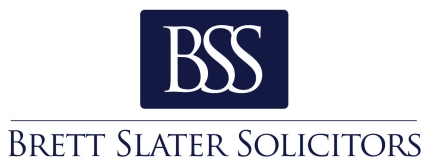Australian Visa Application Mistakes – Top 5
Australian Visa Application Mistakes – what are they?
Australian Visa mistakes can be avoided if an applicant can meet the prescribed eligibility criteria for the relevant subclass and submit a valid and correct Visa application. This should be done in accordance with Australia’s immigration laws, policies and procedures. Avoiding any Australian visa application mistakes is extremely crucial. Invalid applications cannot be considered and will be returned by the Department of Home Affairs to the applicant (or representative), even if that person would otherwise meet the required criteria.
Submission of incorrect Visa applications can waste thousands in preparation costs, extend wait times by months, and cause great inconvenience as the applicant remains in a state of limbo. Invalid applications are particularly detrimental when the timing is a critical element in the application process.
Furthermore, while it’s true that some applicants do not meet the criteria required for the grant of a certain Visa type, many applications are unsuccessful because of procedural errors rather than actual ineligibility.
So, navigating complex immigration systems and being familiar with the Department’s policies and procedures is essential for submitting a valid application. Making a mistake on an Australian Visa application can cause stress and delay the process significantly. As such, this article looks at some common pitfalls which lead to costly Visa application mistakes.
Applying for the wrong Visa type
Australia’s immigration system provides pathways for temporary and permanent residency. With around 100 Visa subclasses are available, each prescribing very specific eligibility criteria, making the right choice from the outset and not making a visa application mistake, is essential to avoid wasting time and money and to increase the prospects of being granted residency.
However, applying for the wrong type of Visa can be detrimental to a successful grant down the track. For example, if a person who proposes staying in Australia long term applies for, and is granted a tourist Visa, then the Visa holder’s real intention (to stay longer) may be seen as a breach of a condition attached to that Visa and jeopardise the grant of a further long-term Visa.
Assessing the most appropriate pathway based on an applicant’s skills, qualifications, personal circumstances and Visa history requires a considered approach, usually with the assistance of an expert Sydney immigration lawyer.
Implications of the lack of supporting documents
The Department assesses thousands of Visa applications and must be satisfied that an applicant meets the required eligibility for the class of Visa sought. Australian Visa mistakes in the application process could result in an immediate rejection.
In addition to verifying an applicant’s personal identity through birth certificates, passports, etc, various Visa types require proof of other matters such as:
- Relationship status – documents to prove a genuine de facto relationship exists such as joint bank account statements, and testimonials from friends and family regarding the nature and length of the relationship.
- Business activities – evidence of company trading history such as financial reports and accounting records, which may need to be audited and verified.
- Personal assets and resources – complex personal wealth, company and trust structures need to be analysed and presented in a manner consistent with Departmental requirements.
- Qualifications, trades and skills – credentials gained overseas need to be matched with the relevant Australian standards and validated through skills assessments.
- Employment records and experience – tax returns, payslips and work references.
Brett Slater Solicitors have expert Immigration lawyers, who understand the documentation required to authenticate this information and often draw on experience in other areas such as corporate law and trusts to ensure an application is properly supported.
The mistakes in the visa application
The correct and most recent Visa application form must be completed in accordance with the instructions. Common Australian Visa mistakes include failing to complete separate applications for additional applicants (such as a dependent child over 18 years), application forms not being signed by all applicants, and using a post office box rather than a residential address. These simple mistakes can be avoided by carefully reading and checking forms and instructions.
The inconsistencies which can occur
Information provided to the Department is scrutinised for inconsistencies. Details may be checked against a range of sources including previous Visa applications, supporting documents, government records and even social media profiles. Information provided to the Department that is contradicted through Facebook posts can be a problem.
It is important to triple check everything before lodging the application, paying particular attention to inconsistent dates which can raise legitimate questions. Transparency is essential and copies of all information submitted should be retained by a Visa applicant.
Irregularities can usually be explained however, identifying issues before they are queried at Department level is preferable. Working with an immigration lawyer to understand and address any matters that could raise concern is wise.
The effects of Bad timing
Delays in meeting eligibility criteria and obtaining documents within prescribed timelines can impact the application outcome. Little flexibility is permitted when it comes to non-compliance, even if a deadline is only marginally missed.
The validity of some Visa applications can be affected by the applicant’s location at the time the application is made. Attention to timing requirements for submission with respect to whether an applicant must be on-shore or off-shore when an application is lodged is critical.
Processing times for applications vary, and it is important to plan strategically to ensure that eligibility criteria can be met and supporting documents provided as prescribed.
Speak to an immigration lawyer today
Many Visa refusals are based on procedural issues rather than an applicant’s inability to meet the required criteria. In many cases, an application will not even be considered and be returned to the applicant as invalid. In some cases, an invalid Visa application may be relodged, and a Visa refusal reviewed. Of course, it is preferable to avoid this situation in the first place by submitting a valid and supported Visa application. Always avoid making an Australian Visa mistake. Use Expert Immigration Lawyers.
If you or someone you know wants more information or needs help or advice, please contact our office on 02 9299 5815 or email to discuss the matter with our friendly and professional team.



